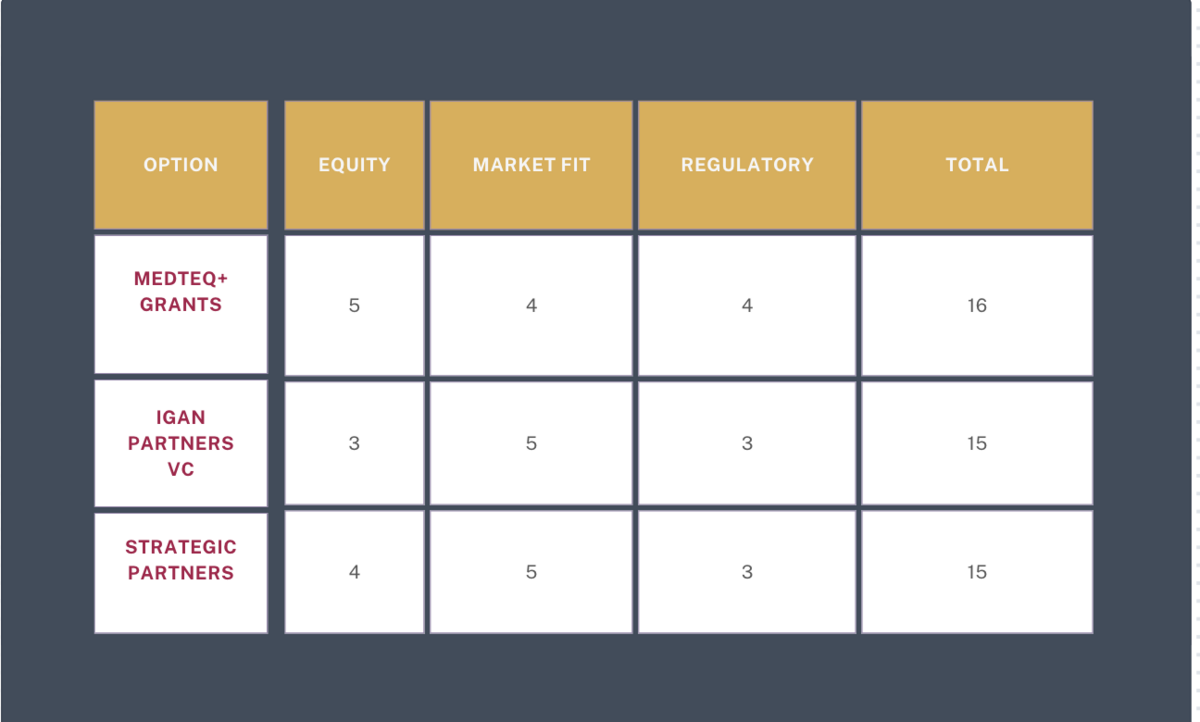This is the Canadian version of the post: Beyond VC: Funding Lifelines for Cash-Strapped US Medtech Startups
I’m veering away from my usual M&A focus to do a quick piece on funding because I’ve been fielding a lot of calls from pre-commercial medtech startup leaders who have hit the end of their runway after a painful and unsuccessful attempt to raise capital last year. An early exit was their plan B but many are not quite there with their technology development to see a profitable exit and need an interim plan to finance that last bit of R&D before initiating an exit via M&A.
There are others far more expert than I in the art of the capital raise but I’ve participated in several raises, know how to be creative and make the most of a shoestring budget, and have mad research skills. So I set to work and came up with some ideas for Canadian medtech startups that need a little more gas in the tank to get them where they need to be. If your device is strictly hardware, modify some of the strategies below with appropriate strategics in mind.
I. The 2025 Canadian Medtech Funding Landscape
- Venture funding for Canadian health tech dropped 18% in 2024, ending at $700M across 287 deals2
- Early-stage investments hit hardest, with funding amounts down 30% and deal counts down 26%2
- Medtech remains one of the fastest-growing segments in Canada's health care and life sciences sectors1
II. Alternative Funding Models & Exit Implications
1. Non-Dilutive Government Grants
- Pro: Maintain equity ownership while advancing product development
- Con: Modest funding amounts, cannot replace equity funding for complex product development
- Exit Impact: Government validation can enhance attractiveness to strategic buyers
- Example: MEDTEQ+ offers R&D project financing and real-world validation project support3
2. Strategic Partnerships with Global Tech Giants
- 2025 Trend: FAMGA (Facebook, Apple, Microsoft, Google, Amazon) actively monitoring Canadian tech landscape
- Exit Impact: Potential for R&D partnerships, licensing deals, or acquisitions
- Watch For: Exclusivity clauses and IP ownership terms
3. Venture Capital with a Twist
- Model: iGan Partners focusing on AI-enabled medtech and digital health in both Canada and US
- Exit Impact: Cross-border collaborations may accelerate path to US market and exits
- New Development: Strategic alliance between iGan Partners and Medical Alley for startup support4
4. Non-Dilutive Financing from MEDTEQ+
- Options: R&D project financing, real-world validation projects, business activity financing
- Exit Impact: De-risking through real-world evidence can increase valuation
- Benefit: Access to vast ecosystem of key partners, including hospitals and research centres3
III. The Hidden Exit Risks
- Grant Dependency: Over-reliance may impact valuation in strategic sales
- Cross-Border Complexities: Navigating US-Canada regulatory differences adds time and cost
- AI Regulation: New Health Canada guidelines may delay AI-enabled device approvals
IV. Action Plan: Funding → Exit Pathway
Step 1: Assess eligibility for MEDTEQ+ non-dilutive financing options
Step 2: Explore strategic partnerships with FAMGA companies
Step 3: Consider iGan Partners for AI-enabled medtech investments
V. Policy-Driven Changes to Alternative Funding
- New Health Canada regulations for drugs and medical devices coming into effect in 20256
- Expanded use of Risk Management Plans (RMPs) for certain new drug submissions6
- Potential for more stringent Terms and Conditions (T&Cs) on medical devices6
Cheatsheet: Canadian Medtech Funding Decision Matrix
Criteria Weighting (1-5):
- Speed of capital access
- Equity retention
- Strategic alignment with Canadian/US markets
- Regulatory compliance support
Scoring:

Next Steps:
- Apply for MEDTEQ+ non-dilutive financing programs3
- Explore iGan Partners' AI-focused investment opportunities4
- Prepare for new Health Canada regulations effective July 20256
This analysis reflects the Canadian medtech landscape as of February 19, 2025. The sector faces unique challenges but also presents opportunities for innovative startups leveraging AI and strategic partnerships to navigate the complex regulatory and funding environment.


